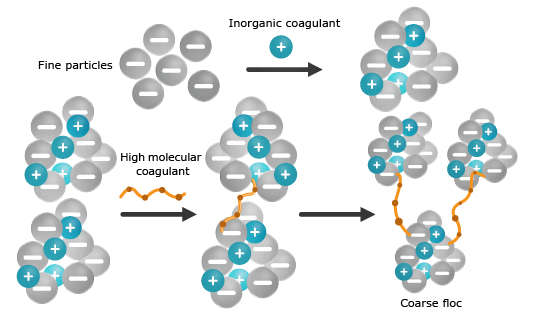Agglomeration and aggregation technologies are used to aggregate fine dirt particles and impurities in water into larger sized particles that are easier to treat.
Flocculation technologies using electro-neutralization and polymers
For example, in the treatment of wastewater, suspended solids are separated from water by converting them into larger coarse particles and causing them to precipitate out due to their mass. However, particles suspended in water are stable (do not precipitate out) because they possess a negative surface charge that repels other particles, preventing the agglomeration and coarsening of particles.
There are two types of agglomeration and aggregation technologies. The first is where a component of the added chemical acts on the surface of the suspended particles, neutralizing their negative charge and stopping them from repelling each other, thereby making it easier to convert them into larger coarse particles. The second type of technology bonds many coarse particles into even bigger coarser particles.
Kurita uses such agglomeration and aggregation technologies in the development of waste water treatment chemicals and sludge treatment chemicals.





